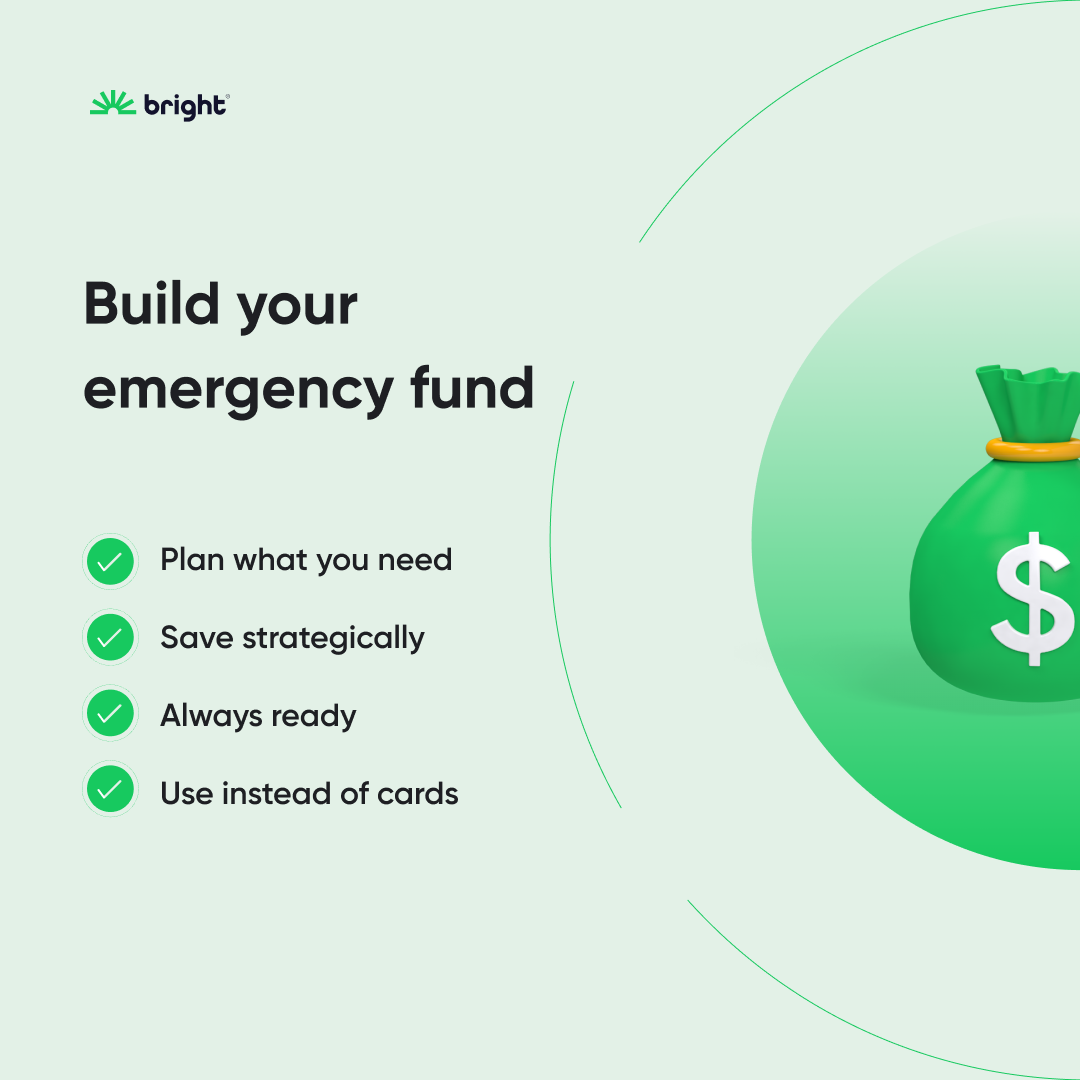.png)
Wohoo!
You are subscribed to our blog newsletter
Awesome!Difference between a rainy day fund and an emergency fund
Two essentials for building a personal safety net, explained.
What’s a rainy day fund?
Your rainy day fund is money set aside to help pay for smaller expenses outside your monthly budget, like buying new tires or a last-minute get-away.
Most people keep a rainy day fund large enough to cover these expenses so they don’t have to rely on credit cards or loans.
How much should I have in a rainy day fund?
A common goal is $1,000. But ideally, your rainy day fund should be equal to an expense that you would typically use a credit card to finance.
For example, if you use your cards for a health care deductible or to pay for a car repair, aim for a rainy day fund that can cover it instead. You might use a credit card for the actual transaction, but you can use your rainy day fund to pay off the card in full right away -- and skip paying your credit cards’ high interest rates.
Some people go big with their rainy day fund, using it for milestone occasions, like weddings or vacations. When you’re saving for something or someone important, it’s easier to focus your efforts and keep your savings on track.
Where should I put my rainy day fund?
Keep your rainy day fund in a FDIC-insured high-yield savings account that’s easy to access, with no fees for withdrawals or transfers. With a rainy day fund in easy reach, you can manage your money with more confidence. You also won’t have to pay your credit cards’ high interest rates the next time you need to go a little beyond your budget.
What is an emergency fund?
An emergency fund is a savings account set aside for major unforeseen expenses, like large medical bills or car repairs.
It may sound obvious, but an emergency fund should only be used for a major financial emergency, such as a job loss or a medical emergency.
How to build an emergency fund.
How much money should I have in an emergency fund?
A common rule of thumb is to start with at least three months’ worth of expenses. Although some advisors suggest as much as six months of expenses saved in your emergency fund.
Think about how you’d rely on an emergency fund. If you lost your job, how long would it take to get a new one? If you broke your arm, would your insurance cover everything? What if your car was totalled? Or you lost your partner? Three to six months without the income you rely on is a good way to start planning.
It can be daunting to start but you can get there gradually. You don’t have to fill your emergency fund all at once. Instead, save a little week by week, within your comfort zone and without compromising your monthly budget or your other obligations.
Why not just rely on credit cards?
Whenever you use a credit card and don’t pay it off in full at the end of the month, you’ll have to pay interest. Your large emergency expense only gets more expensive when you have to pay your cards’ high interest too.
You're making a bad situation worse, effectively turning your emergency into debt. And it could destroy your credit.
What are some ways I can build my savings?
- Establish savings goals. Set realistic goals, so you’re motivated to reach them. Create targeted goals, named after their use, and you’ll be extra motivated, like a “wedding savings fund” or “new car savings fund.” The more goals you set up and reach, the more you’ll have to celebrate.
- Set up auto-save. Regular automatic transfers from your checking account to your savings account can help build your savings. It's a great way to build a healthy savings habit.
- Avoid your credit cards. Whenever you use your cards and don’t pay the balance in full, you’re paying interest. That’s money you could use to build your savings!
- Put your tax refunds to good use. Invest your refunds in a savings account. It’s a big windfall that can help reach your goals.
How can Bright help me build my savings faster?
Bright uses its own patented AI to study your personal finances and find the fastest way to reach your savings goals. Bright can also pay off your credit cards faster. Bright runs automatically, moving funds when it makes and making payments and adding to your savings when it makes sense for you.
If you're not a user yet, download the Bright app from the App Store or GooglePlay. Connect your bank and your cards with just a few clicks. Then set your goals for your rainy day fund and your emergency fund. You can set your own pace or let Bright find the smartest way to reach your goals.
Recommended Readings:
With a postgraduate degree in commerce from The University of Sydney, Pranay has his finger on the pulse of the finance industry. Breaking down complex financial concepts is his forte.









